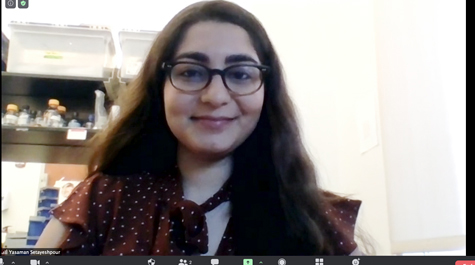A grad student engineers a more stress-tolerant yeast — through CRISPR
This is a tale of two yeasts. Well, actually, three yeasts.
The first yeast is Saccharomyces cerevisiae. It is literally the yeast of beer, “cerevisiae” being Latin for “of beer.” It’s also the yeast of bread. S cerevisiae is one of the common yeasts used by bakers and brewers in both home and industrial kitchens.
The second yeast is the much less-common Kluyveromyces marxianus. It’s a yeast that has its own set of virtues. Yasaman Setayeshpour explains that K. marxianus is a hardier yeast, able to withstand temperaures, oxidative stress and assaults by UV radiation that would frizzle the normal bread-and-beer yeast, S cerevisiae.
“Because K. marxianus is so stress tolerant, it's actually been used a lot in the industry with ethanol production and even chocolate-bean fermentation,” Setayeshpour said.
Setayeshpour is finishing up her master’s degree in William & Mary’s Department of Biology. She is working with Associate Professor Oliver Kerscher in his continuing study of yeast genetics. She has used CRISPR-Cas9 genetic engineering techniques to create a third yeast, by inserting the stress-resistant bits of K. marxianus into the DNA of S cerevisiae.
A genetically modified version of the yeast of bread and beer has enormous potential for clinical and research applications as well as for the food industry. The research is supported by the Virginia Space Grant Consortium, and Setayeshpour explains that as much of the DNA of yeast is genetically homologous to human DNA, this research could shed light on the how the bodies of astronauts respond to environments that are suffused with radiation and other stressors.
“But all of that is pretty far off, though,” Kerscher said. “There will probably never be a pill that you can take to become more stress tolerant, but if we know which genes play into stress tolerance, maybe there could be a readout that could tell if someone was exposed.”
CRISPR is an increasingly common lab tool. It doesn’t require anything in the way of special instrumentation, Setayeshpour explained.
“The way that the CRISPR-Cas9 technology works is that we use that Cas9 protein in order to make cuts inside the genes,” she explained. “Then we can go in and we put our own modifications on them and put them inside where the cut is.”
This gene-editing technology relies on another molecule called a guide RNA. Setayeshpour explained that the guide RNA directs the Cas9 protein.
“You want to direct it to a specific part of the gene that you want to modify,” she said “And then along with that little plasmid that we're transforming our yeast with, we have this little repair template to then swoop in, and kind of insert itself inside the genome of organisms.”
She has isolated a number of K. marxianus genes related to stress tolerance, cloned them — then swooped them into the proper spots that were cut into the S cerevisiae by Cas-9.
“And that's how the CRISPR-Cas9 technology works,” Setayeshpour continued. “And it's very neat, because it makes these cuts and then whatever you put in becomes part of the genome.
Setayeshpour and Kerscher talk about the potential advantages of a version of S cerevisiae, genetically modified to work under high-stress conditions. Setayeshpour points out that S cerevisiae is a well-known tool of the food and fermentation industry. Kerscher added that a new, improved version of the familiar yeast — especially one that does the job at a higher temperature —would likely find wide acceptance.
“A lot of the biochemical processes proceed better and more efficiently at higher temperatures,” he explained. “I mean fermentation processes, for instance. Or if you want to use humongous-sized vessels, when you are working with yeast, you want something where the yeast won’t die off so quickly because they are more stress-tolerant.”
Setayeshpour is finishing up her work on her master’s degree, including a paper on the CRISPR-Cas9 work. She has been accepted into a Ph.D. program at Duke University.
 Skip to main content
Skip to main content

